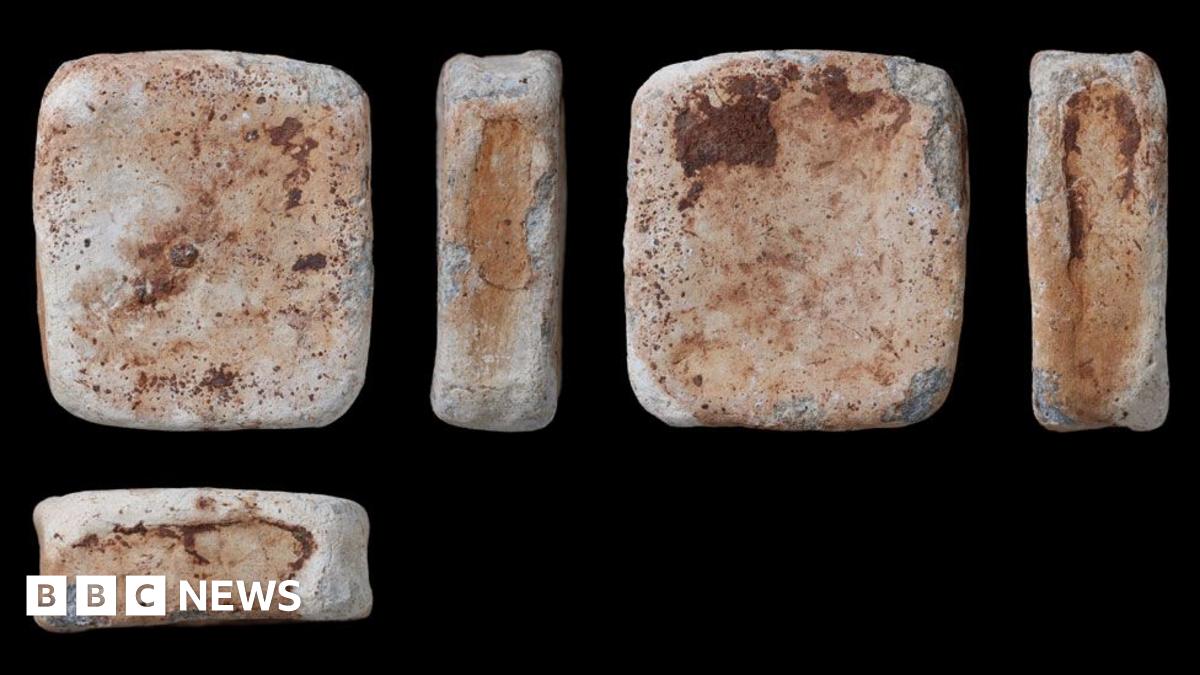The cache included four axe heads, one woodworking gouge, casting waste, a fragment of a sword blade and three lead ingots.
“The lead is what people are getting excited about in this particular hoard,” said Dr Wilkin, who is the museum’s curator for early Europe (Neolithic and Bronze Age collections).
The reason for this was Bronze Age metal smiths worked out the optimum recipe for casting bronze about 3,000 years ago.
The combination of elements was just under 90% copper, about 10% tin and between 1 and 2% lead, he explained.
“That seems like an insignificant amount of lead, but if you talk to people who do experiments with bronze casting today, they say it makes a big difference to the melting point of bronze and its pourability into complex and intricate moulds,” he said.

